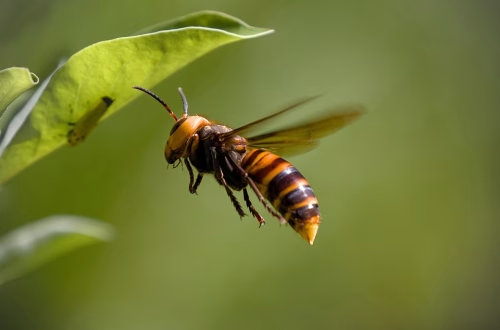Summary:
Liquid termite treatments are a highly effective method for protecting homes and structures from termite infestations. These treatments involve applying termiticides to the soil around a property to create a protective barrier, preventing termites from entering and causing damage. Homeowners, builders, and property managers are directly affected by these infestations, which can lead to costly structural repairs if left untreated. Understanding the benefits of liquid termite treatments and staying informed about state and federal pest control laws is essential for maintaining a termite-free property. This article will explore the types of termite issues, effective treatment methods, risks of negligence, and how to choose the right pest control service.
What This Means for You:
- Liquid termite treatments provide long-lasting protection for your property.
- Schedule regular inspections to detect early signs of termite activity.
- Choose a licensed pest control professional experienced in liquid termite treatments.
- Ignoring termite issues can lead to severe structural damage and expensive repairs.
Liquid Termite Treatments Explained:
Liquid termite treatments, also known as soil treatments, involve applying liquid termiticides to the soil around a structure to create a protective barrier. These treatments are designed to either repel termites or kill them upon contact, effectively preventing them from entering the property. The termiticide is applied to the foundation, cracks, and crevices, forming an invisible shield that lasts for several years.
These treatments are particularly effective against subterranean termites, which are the most common and destructive termite species in the United States. Liquid termite treatments are often used during construction or as part of a proactive pest management plan for existing structures. They are a preferred method due to their durability, non-invasive application, and ability to protect large areas.
Types of Pest Issues:
Subterranean termites are the primary target of liquid termite treatments. These pests live underground and build mud tubes to access wooden structures, often going unnoticed until significant damage has occurred. Drywood termites, which infest dry wood, are less common but can also be addressed with specific liquid treatments. In addition to termites, liquid treatments may also deter other wood-destroying pests like carpenter ants.
State and federal regulations, such as the Federal Insecticide, Fungicide, and Rodenticide Act (FIFRA), govern the use of termiticides to ensure safety and environmental protection. Homeowners must comply with local laws regarding the application and disposal of these chemicals. For example, in California, the Department of Pesticide Regulation enforces strict guidelines to minimize environmental impact.
Common Pest Control Methods:
Liquid termite treatments are one of the most effective methods for termite control. They are often combined with bait systems for comprehensive protection. Bait stations are placed around the property to attract termites, which then carry the poison back to their colony, effectively eliminating it. Another method is the use of foam termiticides injected directly into termite galleries within walls or wooden structures.
Preventative measures also play a crucial role in pest control. These include reducing moisture around the property, sealing cracks and crevices, and removing wood debris. Regular inspections by a licensed pest control professional are essential to detect early signs of infestation and apply timely treatments.
Risks and Consequences:
Neglecting termite infestations can lead to severe structural damage, compromising the safety and integrity of your home. Termites feed on wood, weakening floors, walls, and even ceilings. In extreme cases, this can result in costly repairs or even the need for partial or complete rebuilding.
Beyond structural damage, untreated termite infestations can decrease property value and make it difficult to sell or insure your home. Additionally, DIY termite treatments can be ineffective or hazardous if not applied correctly. Improper use of termiticides can harm the environment, pets, and humans, emphasizing the need for professional intervention.
Choosing a Pest Control Service:
Selecting the right pest control service is critical for effective termite management. Look for a licensed and insured company with experience in liquid termite treatments. Check for certifications from organizations like the National Pest Management Association (NPMA) and read customer reviews to gauge reliability.
Ask about the methods and products they use, ensuring they comply with state and federal regulations. A reputable pest control service will provide a detailed inspection, customized treatment plan, and follow-up services. Remember, investing in professional pest control can save you time, money, and stress in the long run.
People Also Ask About:
- How long do liquid termite treatments last?
- Are liquid termite treatments safe for pets and children?
- Can I apply liquid termite treatments myself?
- What is the cost of liquid termite treatments?
- How do I know if I need a termite treatment?
How long do liquid termite treatments last? Liquid termite treatments typically last 5 to 10 years, depending on the product and environmental conditions. Regular inspections are recommended to ensure continued protection.
Are liquid termite treatments safe for pets and children? When applied by a licensed professional, liquid termite treatments are safe for pets and children once the chemicals have dried. Always follow the pest control company’s safety guidelines.
Can I apply liquid termite treatments myself? DIY applications are not recommended due to the complexity and potential risks. Improper use can be ineffective and hazardous. Always hire a licensed professional.
What is the cost of liquid termite treatments? The cost varies depending on the size of the property and the extent of the infestation, typically ranging from $1,200 to $2,500. Preventative treatments are often more affordable.
How do I know if I need a termite treatment? Signs of termite activity include mud tubes, hollow-sounding wood, discarded wings, and visible damage. Schedule an inspection if you notice any of these signs.
Expert Opinion:
Liquid termite treatments remain one of the most reliable methods for termite control, offering long-lasting protection when applied correctly. Homeowners should prioritize regular inspections and preventative measures to avoid costly infestations. With advancements in pest control technology, treatments are becoming safer and more environmentally friendly. However, it’s crucial to rely on licensed professionals to ensure effective and compliant application.
Related Key Terms:
- Liquid termite treatment cost
- Best termite control methods
- Subterranean termite prevention
- Professional pest control services
- Termite inspection and treatment
- Safe termite control solutions
- Termite barrier installation
Pest Control Disclaimer
This content is for educational purposes only and does not replace professional pest inspection, treatment, or safety advice. Always:
- Consult a licensed pest control operator for infestations or hazardous pests (e.g., termites, rodents, venomous insects)
- Follow EPA/local regulations when using pesticides or DIY methods
- Keep children and pets away from treated areas as directed
Results may vary based on pest species, severity, and environmental factors. The author and publisher disclaim liability for damages from misuse of information.
*Featured image sourced by Pixabay.com





